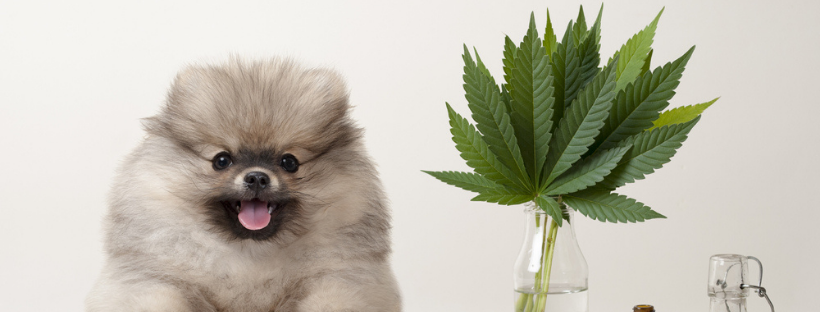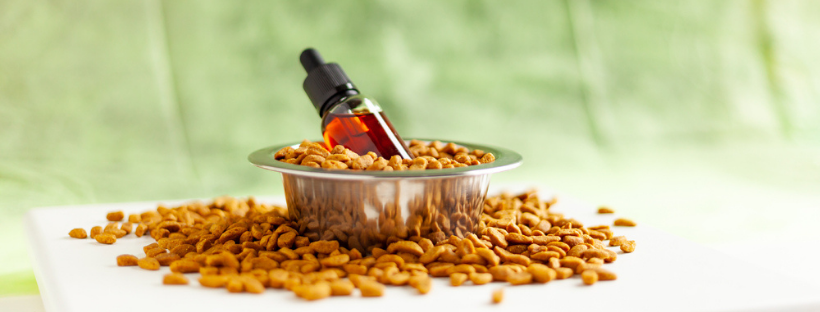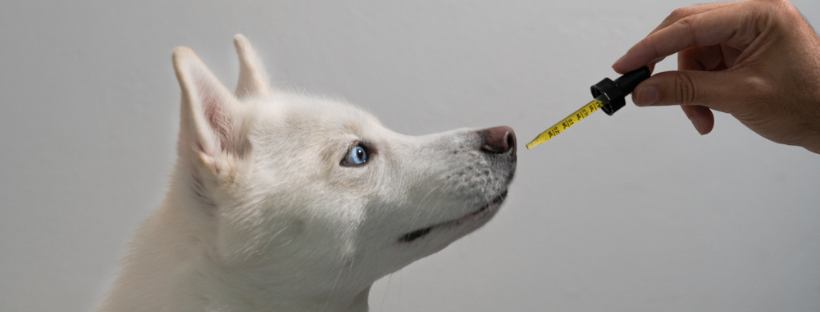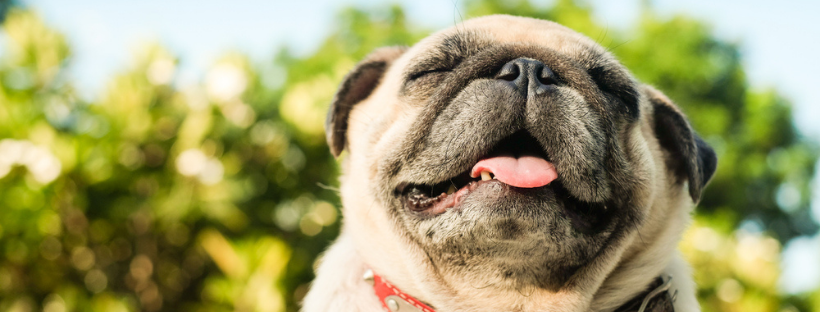CBD produces many positive effects for pets, and many people are eager to have their dogs try it.
As a pet parent, you’re probably hesitant to offer CBD to your pet without understanding it first. You are bound to ask yourself some questions about CBD. What is CBD? How is it made? How safe is the oil? How do you know which product to choose? Must I buy the kind meant for pets? Can my dog and I share my CBD products?
Questions like those come up, especially when purchasing CBD for pets for the first time. This article provides the needed answers, making it the ultimate pet owner’s guide for dogs’ CBD usage.
What Is CBD?
Cannabidiol (CBD) is a chemical compound extracted from cannabis sativa or hemp. CBD is not psychoactive, and its consumption does not cause human beings or animals to get high. Instead, it promotes relaxation of the body and mind, relieving tension and stress.
THC, the other primary cannabinoid, produces a euphoric effect. The hemp plant, from which most of the CBD is extracted, does not contain any THC. Although CBD is also extracted from other low THC cannabis, CBD for pets is often made from the hemp plant.
In the U.S., the government lifted the legal restrictions on CBD. Acknowledging that some cannabis sativa plants may contain THC traces, authorities placed a 0.3 percent THC concentration limitation. People can consume CBD oil with 0.3 percent THC safely. For pets, even the 0.3 percent concentration may be problematic. Consumption of THC is highly discouraged for pets. But, this is not to say that there are no CBD pet products with some THC. You need to identify and avoid them.
Can Dogs Take CBD Safely?
Your dog’s health and wellness are paramount, and you carry the responsibility of ensuring that everything you offer is safe.
The good news is that CBD oil is safe for your dog, as long as you stick to the recommended dosage. Even if you exceeded the dosage, your dog would survive it. It would only be unwell for some days but return to normal when the CBD clears up. But, it’s better to stick to the recommended dosage.
CBD is generally well-tolerated and has no severe side effects. You may only notice that your dog is sleepy or groggy a little bit more than usual. Sleepiness and grogginess are signs you slightly went over the right dosage. If you knocked down that dose a bit, your pet would enjoy CBD without any adverse reactions.
The only way CBD can harm your dog is when you administer it with drugs. If your dog is on medication, do not give it any CBD before consulting the vet. The vet evaluates the CBD, its contents and concentration and examines your dog before giving a recommendation. The vet may permit you to proceed or ask you to wait until the dog is off medication. Heed to the advice given and administer CBD only when it is safe to do so.
How CBD Interacts With the Dog’s Body
CBD works for dogs the same way it does for humans. Both animals and people have an endocannabinoid system that produces signals to control many body functions. The system receives instructions from the brain and relays these signals to the body’s systems and organs. This happens when the brain senses some imbalance in the body. Examples of imbalances are stress, pain, immunity response, inflammation, and digestion problems.
CBD works in the animal or human body because it is a cannabinoid. There are two types of cannabinoids: phytocannabinoids and endocannabinoids. The latter is found in humans and animals, while the former is in plants. Studies show that CBD has phytocannabinoids that mimic the working of the endocannabinoids in the body.
CBD communicates with the endocannabinoid system’s receptors, CB1 and CB2, to respond to the imbalances indicated by the brain. Since CBD does not bind to the receptors, some scientists believe it encourages the body to increase endocannabinoid production. Higher endocannabinoid production helps correct the existing imbalance.
Potential Drug Interactions
Seeing that CBD interacts with the endocannabinoid system, possible drug interactions are worth a mention. Drugs practically influence body functions too, and their interaction with CBD can result in complexities. This is why you must consult your vet when administering CBD, especially if the dog is already on medication.
In some cases, the CBD complements the medication and accentuates its positive impact. If this is the case, the vet may reduce your dog’s prescription and take out some pharmaceuticals, especially those with a poor safety profile. Pain relievers and NSAIDs belong to this category of drugs.
CBD may also negatively affect the working of some medications. For example, drugs that interact with the grapefruit may also negatively interact with CBD. CBD is similar to the compounds in grapefruit, and both of them inhibit the expression of cytochrome P450 enzymes necessary for breaking down various pharmaceuticals. Pharmaceuticals that could interact with CBD are steroids, blood pressure medications, antihistamines, antiviral and antibiotic medications. Immune system modular, antipsychotic, and psychotropic medicines may also produce the same effect.
If your dog is on any of these medications, prioritize consulting your vet before purchasing any CBD product. The vet will advise you on the form of CBD to buy and its concentration. Doing so could save you money and preserve your dog’s health.
That said, a few safety studies found that CBD causes an elevation of the liver enzymes. But, they found this to be a dosage issue. Although this was not found in one-time overdose situations, it could be an issue in the long-term. Pet parents are encouraged to observe dosage guidelines to prevent this condition. They should also keep an eye out for the liver enzymes and the total bilirubin level through routine examination with the vet.
Picking the Right CBD Products for Your Dog
When you need to buy CBD products, find online or walk-in marijuana or CBD dispensary. A retailer that deals with marijuana products is likely to stock a variety of CBD products for pets. He may also offer advice on how to use the product. Also, perhaps you could get a discount if you buy CBD oil for yourself and your dog. The bottom line is that you need to deal with a retailer with a varied inventory and good product knowledge.
When you go CBD shopping, the rule of thumb is never to buy your pet any CBD products meant for humans. The products may look the same, but the labeling should be different. The human version may have added additives that could harm your dog. For example, CBD gummies for humans have an artificial sweetener called xylitol. Harmless to humans, this compound is toxic to dogs. You also want to avoid THC at all costs. Many products meant for humans may contain some THC.
Here are some quick tips to guide you in identifying the right CBD product:
- Opt for organic products. They are less likely to carry fungicides, pesticides, and other solvents.
- Look out for the seal of the National Animal Supplement Council.
- Avoid the cheap stuff. Pure and high-quality CBD products are pricey.
- Read the ingredients and research them. Ensure that none is an additive.
- Opt for liquid CBD oil. Dosage is easier when you can measure the oil drop by drop.
- Look out for a certificate of analysis. If it’s not available online, ask the company to present it. The certificate shows the contents of the CBD product as determined by an independent third party. Remember to check if the product contains even the tiniest THC amount.
Finding the CBD Dosage for Your Dog
Your dog’s CBD dosage depends on three factors: the dog’s weight, the CBD concentration of the product, and the dog’s condition. Most products come with dosage instructions. But, if it doesn’t, you need to calculate the dose.
Start with calculating the amount of CBD oil the dog needs in milligrams, going by its weight. Next, determine the amount of CBD, in milligrams, available in the oil, per millimetre.
See the example below:
Let’s say you intend to give a dose of 0.5 mg per pound, and your dog weighs 50 pounds. You would need to administer 0.5 x 50 = 25 mg of CBD.
Next, calculate the amount of oil you would need to give your dog. Let’s say you bought the 6 mg CBD in a 300 mg bottle. Each ml would have 5 mg of CBD.
So, to give your dog 25 mg of CBD per day, you would give him 5 ml of CBD oil.
Since you will be introducing a new product to your dog’s system, you must start with a smaller dose. Start small and gradually increase the dosage until you get to the dog’s ideal dose. The gradual process allows the body to adjust to having CBD. Give the pet at least one week to adapt to a new dose. Watch how its body reacts and evaluate the need for more CBD.
Experts say that after consuming CBD, it takes one to three hours to see any effects. Sometimes, it takes less time, though
Possible Negative Effects
The possible adverse effects of consuming CBD products have nothing to do with the CBD itself. CBD remains harmless in its pure form. The extras that producers add to the CBD make it harmful. For example, the American Veterinary Medical Association says that the toxicity reports it gets are about people feeding their dogs CBD treats containing raisins, xylitol, and chocolate. Each of these items is toxic to dogs by itself. So, avoid buying CBD products containing anything that your dog should not eat normally. Also, keep the product wrapping away from your puppies. There have been reports of choking caused by wrappers.
Also, beware of CBD products marketed as “soft chews.” They have an osmotic effect. If the dog ingests large amounts of the product, it draws fluid from the dog’s body into the gut. In a mild case, your dog may start to have diarrhea and become dehydrated. In a severe case, though, it may develop hyperglycemia, hypernatremia, and hyperkalemia. Others develop acidosis and azotemia. When this occurs, the dog needs aggressive liquid therapy and constant monitoring of its hydration status. To prevent this from happening, avoid the “soft chews.”
What If the Dog Appears High?
If your dog appears high, the first thing to remember is that CBD is not psychoactive. So, the high must be from something else. Most often, it is from THC.
It could be that the product you got has both THC and CBD. Because the CBD market is not standardized, unscrupulous producers may label their products “for pets,” even when they contain substantial THC. As you know, THC is not suitable for animals. To avoid buying a product containing THC, take your time researching your preferred product and its manufacturer.
Your dog could also be high because it ate some marijuana or THC edibles. If you are a cannabis enthusiast, avoid leaving your stuff unattended. For example, do not leave your marijuana products on the counter or in a cabinet your dog can easily access. If the container falls and breaks, your dog would have access to these THC products.
Another reason your dog could be high is that it might have ingested a large amount of CBD enough to cause THC toxicity. You see, some CBD contains traces of THC. If a certificate of analysis is not available, your CBD oil may have some THC. Although CBD oil with any THC is not advisable, sometimes it could be all you can access. But, if you let your dog overdose, some mild toxicity could occur. So, opt for pure CBD oil. If it’s not within reach, get some with the least amount of THC possible. The THC should be well below 0.3%
In Closing
Get Kush stocks high-quality THC-free CBD products for your pets. Get your pup a bottle of CBD oil, treats, and topicals. We also have a variety of CBD products that pet parents can enjoy.






